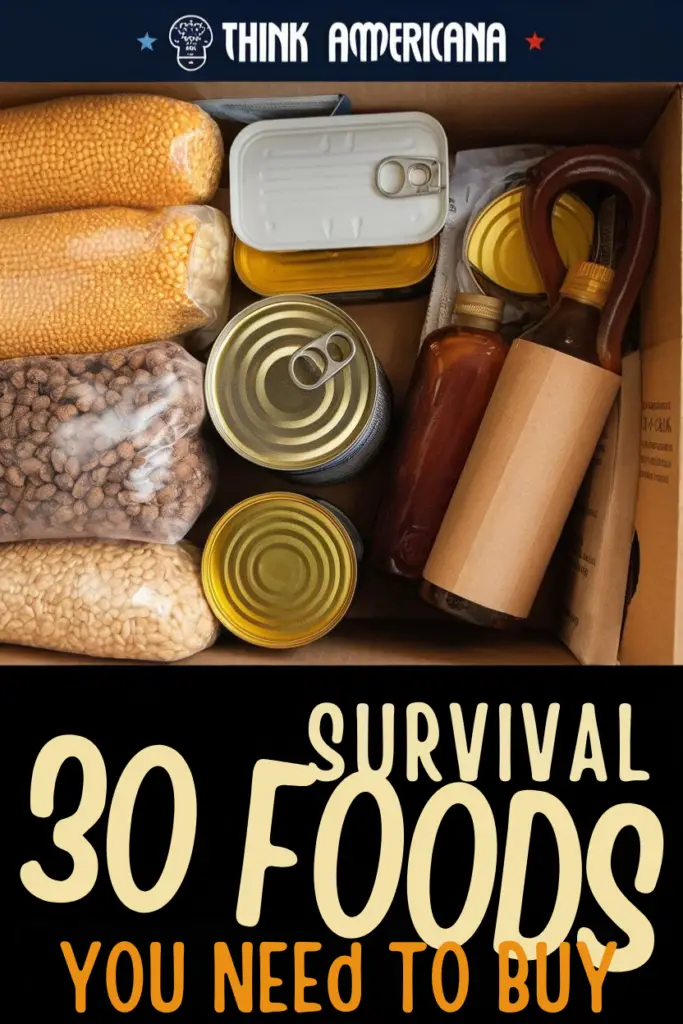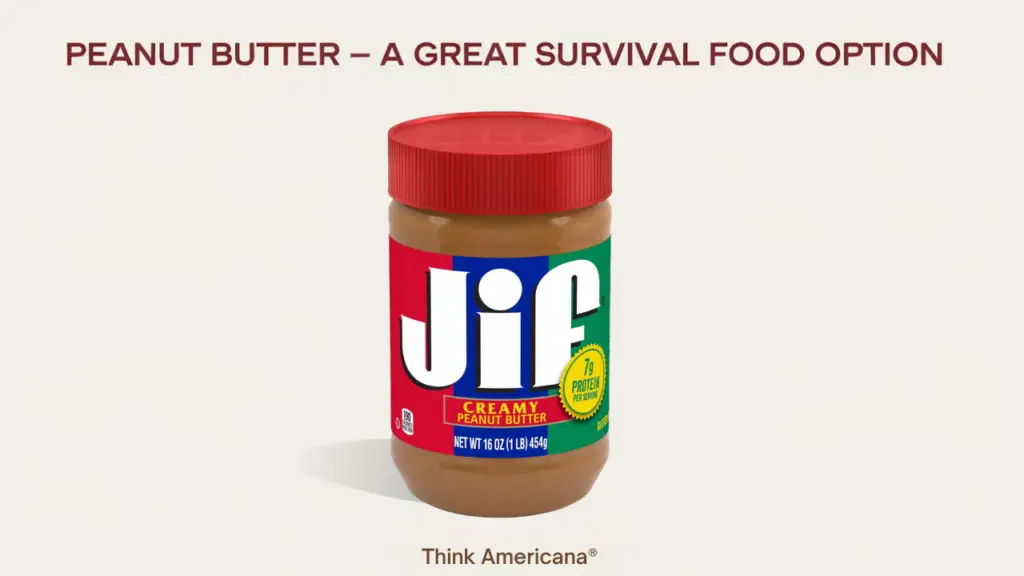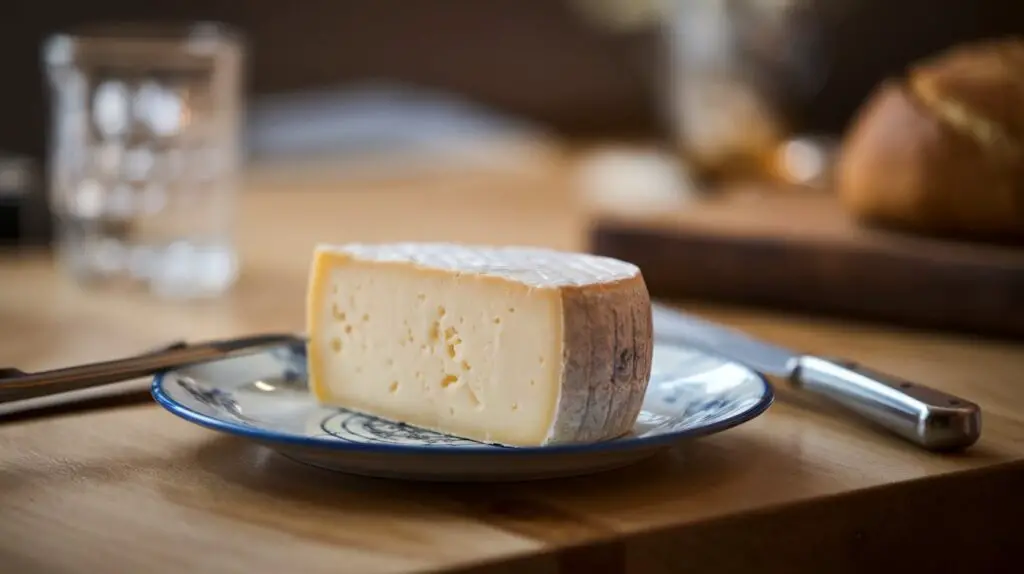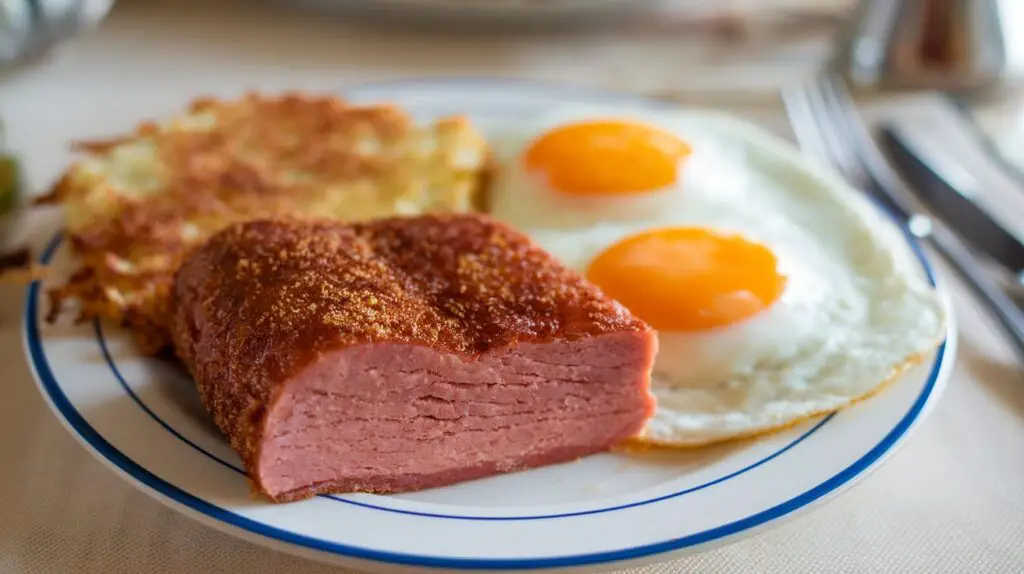When it comes to being prepared for emergencies or unforeseen situations, having a stockpile of survival foods is crucial.
I've gathered insights on essential items that not only last a long time but also provide nutritional value when needed most.
What are some key ingredients you can rely on to bolster your emergency preparedness plan?

Table of Contents
Disclaimer: There are affiliate links in this article. That means if you use them to make a purchase, we get paid a commission at no extra charge to you. It's how we keep the lights on.
Exploring survival foods is quite fascinating. It involves finding the best options that can sustain us during difficult times.
My goal is to highlight options that are versatile, long-lasting, and easy to store, ensuring they're ready when you need them the most.
It’s all about having peace of mind knowing you’re prepared.
1) Canned Tuna
I always keep canned tuna in my survival stash. It's an excellent source of protein, providing the needed energy during emergencies.
Plus, the long shelf life is a huge bonus for my prepping needs.
Tuna offers not just protein but also healthy omega-3 fatty acids, crucial for maintaining heart health. It's versatile, and I can easily mix it into salads or sandwiches when fresh food is scarce.
2) Dried Lentils
I find dried lentils to be a great choice for long-term storage. They are packed with protein and fiber, making them a nutritious staple.
Their versatility means I can include them in various dishes, from soups to stews.
Storing them in a cool, dry place helps maintain their quality. Lentils have a long shelf life, often lasting several years without losing their nutritional value.
They're easy to cook, requiring only water and a bit of time to simmer. Plus, they are cost-effective, which makes them a smart addition to my survival food supply.
3) Peanut Butter

I always find peanut butter to be a fantastic survival food. It's packed with protein and healthy fats, offering a much-needed energy boost in challenging times.
Plus, it's super versatile and can be eaten on its own or added to other foods for extra flavor.
One of my favorite aspects of peanut butter is its shelf stability. It can last for quite a while unopened, making it perfect for stocking up.
I also appreciate how easy it is to find and relatively affordable compared to many survival foods.
4) Canned Beans

I always keep canned beans in my emergency stash. They're not just a great source of protein, but also packed with fiber. This combination is perfect for keeping energy levels steady when fresh supplies might be hard to come by.
One of the best things about canned beans is their long shelf life. They can last for years if stored correctly and are versatile enough to include in various meals.
Plus, they don’t require much prep—just open, heat, and enjoy!
5) White Rice

When it comes to essential survival foods, white rice is a staple in my emergency food supply.
It’s versatile, easy to store, and most importantly, can last for decades when kept in dry, airtight conditions.
Not only is it a reliable source of carbohydrates, but it also provides the energy I need in challenging situations.
I love how adaptable white rice is for different meals. It can easily turn into a hearty dish when combined with beans, vegetables, or meats, keeping my meals satisfying and nutritious.
Whether I’m planning emergency meals or day-to-day dishes, white rice is a comforting, reliable choice.
6) Beef Jerky

I always keep beef jerky in my survival kit because it's incredibly convenient and packed with protein.
It's one of those foods that doesn't need cooking, which makes it perfect for emergencies.
The best part is that it's portable and can be stored for long periods. As long as you keep it in a cool, dry, airtight container, it stays fresh for months.
7) Oatmeal

I always think of oatmeal as a classic staple when planning my emergency food supplies.
It’s highly nutritious and filling, providing a satisfying and comforting meal.
Long shelf life is one of oatmeal's strong points, making it ideal for long-term storage. Quick oats can last decades if stored properly in a cool, dry place, away from pests.
It’s also versatile, so I can easily mix it with different ingredients to vary flavors and nutritional content, enhancing its appeal during extended use.
8) Trail Mix

I love creating my own trail mix because it's packed with energy and easy to carry on any adventure.
My go-to ingredients include roasted almonds, cashews, and sunflower seeds.
Sometimes, I like to mix in some chocolate or pretzels for a sweet and salty surprise. It's a versatile snack that can be tailored to any taste preference.
If you want to buy your own trail mix, we recommend Power Up Premium Trail Mix.
9) Powdered Milk

I always keep powdered milk in my survival pantry because it’s a versatile and long-lasting staple. It can stay good for up to 25 years when stored properly.
I find it incredibly useful for baking, cooking, or simply making a refreshing glass of milk by just adding water. It’s a lifesaver in emergencies.
When I look for powdered milk, I prefer non-fat varieties sealed in mylar bags. These are easy to store and ensure the milk stays fresh and ready for any situation.
10) Crackers

I’ve always considered crackers a staple in any survival food list. They’re versatile, lightweight, and have a surprisingly long shelf life.
Whether it's pilot bread with a 30-year lifespan or homemade versions, crackers are a reliable option.
When I stockpile, I go for a variety of crackers to cover different tastes and nutritional needs. They pair well with peanut butter, jams, or canned food, making them perfect for quick meals.
11) Honey

I find honey to be an amazing survival food. It's not just a sweet treat; it's also packed with nutrition and calories, which is essential in tough times.
The best part about honey is that it has a nearly eternal shelf life. Its natural antibacterial properties keep it from spoiling, which makes it a reliable choice for long-term storage.
I've always admired its versatility. Besides being a great sweetener, honey can soothe a sore throat and even help heal minor wounds. Keeping honey in my survival kit is a no-brainer.
12) Instant Noodles

Instant noodles have always been my go-to for a quick and easy meal.
They're lightweight and compact, making them perfect for storing in a small space.
The long shelf life means I don't have to worry about them going bad anytime soon. I can enjoy a comforting and satisfying meal with just some boiling water.
Their versatility is another great advantage. I can easily add vegetables or protein to make a more balanced dish.
Whether it's a simple snack or part of a hearty meal, instant noodles come to my rescue.
Don't make this too difficult. Even good old Ramen works, just throw a couple in your emergency food kit.
13) Canned Vegetables

When I'm packing my survival kit, canned vegetables always make the cut. They offer essential nutrients and vitamins that are perfect for emergencies.
The long shelf life makes canned veggies such a reliable option.
I appreciate how easy it is to integrate canned vegetables into meals. Whether it’s a quick soup or a stew, they elevate dishes with little effort.
Plus, they require no refrigeration, saving space and energy.
14) Pasta

I’ve always found pasta to be a go-to survival food. With its impressive shelf life, it can last up to 30 years when kept in proper, moisture-free storage conditions.
What I love most is the versatility it offers; it pairs well with numerous sauces and seasonings, making it a reliable choice in any survival scenario.
While it requires some cooking, the effort is minimal. And the payoff in terms of energy and comfort is significant when times get tough.
15) Canned Fruit

I always keep canned fruit in my survival pantry because it offers essential vitamins and nutrients. It's convenient, tasty, and has a long shelf life.
Canned peaches, pears, and pineapples are my favorites. They provide a sweet treat and are perfect for making quick desserts or adding to meals.
The high acidity in some fruits naturally preserves them longer, a big plus when storing supplies for emergencies.
16) Granola Bars

I always keep granola bars handy, as they’re a convenient and nutritious survival food option. They're light, portable, and perfect for quick energy during emergencies.
Granola bars often come packed with oats, nuts, and fruits, providing a good mix of carbohydrates, protein, and fiber. Their long shelf life makes them a reliable choice for survival kits.
Whether I'm facing a power outage or a camping adventure, granola bars are a tasty and practical addition to my survival food stash.
17) Dehydrated Eggs
I always keep dehydrated eggs in my supply for emergencies. They are lightweight and easy to store, making them perfect for long-term food storage.
With a shelf life of up to 30 years, they are a reliable source of protein.
Preparing them is simple. Just add water, and they are ready for cooking in various dishes. I love the versatility, whether it's for breakfast or adding to baked goods.
Amazon has a wide variety of dehydrated (or dried) eggs.
18) Canned Soup

I always find canned soup to be a comforting and practical choice for emergency food supplies. It offers a variety of flavors and types, from classic chicken noodle to hearty stews.
Plus, it's ready to heat and eat, making it convenient during stressful times.
In my experience, canned soup is a lifesaver because it combines liquid and nutrients that can sustain me in challenging situations. It’s also easy to store and usually has a long shelf life, perfect for any preparedness plan.
19) Nuts

I always make sure to include nuts in my survival food stash. They're not just a tasty snack; they pack a powerful punch of protein and healthy fats.
Nuts store well for a long time, making them perfect for long-term food supplies. They can even enhance dishes like baked goods or salads.
To keep my nuts fresh, I opt for options like pistachios, known for their durability when stored properly. Baking or freezing raw ones helps maintain their quality, especially if they're raw.
20) Freeze-Dried Meals

I love freeze-dried meals when it comes to survival foods. These lightweight, portable options are perfect for emergencies or just a quick camping trip.
They have a longer shelf life compared to regular food, making them a great choice for stocking up.
Preparing freeze-dried meals is simple—just add hot water, wait a few minutes, and they're ready to enjoy.
I find the variety of options delightful with different flavors and cuisines to try. Whether it's pasta or chili, there's something in freeze-dried meals for everyone.
ReadyWise makes awesome freeze-dried meals to boost your survival kit.
21) Hard Cheese

I always include hard cheeses when planning for emergencies. They're low in moisture, which helps them resist spoiling for an impressive amount of time.
Parmesan, aged cheddar, and Gouda are absolute stars in my stockpile. When wrapped correctly and stored in a cool, dry spot, these cheeses can last for several months or even longer.
Hard cheese is versatile and can enhance almost any dish, providing a comforting and delicious addition to meals when other options are limited.
22) Spam

I find Spam to be a versatile and reliable option for survival needs. It's affordable, doesn't need refrigeration, and you can eat it straight from the can.
Packed with calories, protein, and fats, Spam provides essential nutrients when I'm in a pinch.
Especially in emergencies, having a convenient, nutrient-dense food like Spam is a significant advantage for me.
Plus, I can easily incorporate it into many recipes, from breakfast hashes to hearty stews, making meal prep both simple and satisfying.
23) Energy Bars

When I'm preparing for emergencies, energy bars are a must-have in my survival kit. They are compact and provide a quick boost of energy, making them perfect for crisis situations.
I look for bars with a good balance of calories, protein, and fiber to keep me fueled. It's comforting to know they're easy to store and have a decent shelf-life.
We recommend Millenium Bars for a great addition to your emergency food supplies.
24) Whole Wheat Flour

Whole wheat flour is a staple in my survival pantry. It's versatile and can be used to make a variety of breads and meals.
Packed with fiber, vitamins, and protein, it supports good nutrition when other food options are limited.
I appreciate its long shelf life, making it a dependable choice for emergency storage.
Simply store it in a cool, dry place to keep it fresh. Whether making survival bread or hearty meals, whole wheat flour never lets me down.
25) Instant Coffee

Instant coffee is a game-changer in any survival situation. It’s lightweight and easy to store, which makes it perfect for emergencies.
I love that I can make a hot cup quickly without any special equipment.
There are brands that promise their coffee lasts up to 25 years. This long shelf life ensures I always have a comforting drink to rely on, no matter what challenges come my way.
Don't overthink it. NESCAFE Taster's Choice is an awesome instant coffee option for your survival kit.
26) Salt

I always keep salt in my survival food stash, and for good reason. It's not just for adding flavor; salt is key for preserving food and essential in many recipes.
It lasts indefinitely if stored properly.
Salt has been used for centuries as a method to preserve meats and other foods. Besides, having salt on hand is crucial in a survival situation, where nutrient and flavor balance becomes essential for morale and health.
27) Sugar

I always keep sugar in my emergency stockpile because it’s such a versatile ingredient. It not only sweetens our food but can also provide a quick energy boost.
Although sugar doesn't spoil, it’s important to store it in a cool, dry place with a tight lid to keep pests away. With these simple precautions, sugar is one item I rely on for long-term storage.
28) Coconut Oil

I always keep coconut oil on hand as part of my survival food supply. It’s incredibly versatile and can last for years if stored properly.
From cooking to personal care, its uses go beyond just being a food item. Adding it to meals enhances flavor and provides healthy fats, which are essential for nutrition.
29) Canned Chicken

Canned chicken is a go-to in my emergency food supply stash. It's packed with protein and requires no cooking, making it super convenient in a pinch.
I can add canned chicken to anything from salads to casseroles. This makes it a versatile choice for meals when fresh ingredients aren't available.
When stocking up, I look for low-sodium options to keep my diet healthier during emergencies. This keeps my heart happy and my meals tasty!
30) Quinoa

I love having quinoa in my survival food stash. This tiny grain is packed with protein, which is great for maintaining energy levels. It's also rich in essential amino acids.
Quinoa is wonderfully versatile. I can easily use it in salads, soups, or as a side dish. Plus, its long shelf life makes it a reliable option for long-term storage.
I always ensure to store quinoa in airtight containers. This keeps it fresh for years, making it a fantastic addition to my emergency pantry.
How About An All-In One Survival Food Kit?
This could be an entire article in itself. Instead of going too deep we're just going to make a quick recommendation.
4-Patriots 4 Week Food Essentials Survival Kit
Benefits of Stocking Up on Survival Foods

Stocking up on survival foods has several advantages, including extended storage time, essential nutrients to maintain health, and hassle-free access during crises.
Long Shelf Life
One of the biggest perks of survival foods is how long they last. Foods like freeze-dried meals, whole grains, and canned goods can stay good for years, sometimes even decades.
Having these items means I can take my time consuming them without worries about spoilage. Storing them properly in airtight containers keeps them fresh. By reducing waste and frequent trips to the store, I save time and money. In tough times, knowing I have a ready supply of essentials gives me peace of mind.
Nutritional Value
When I stock up on survival foods, I'm often surprised at how nutritious they are. Items like beans, oats, and canned vegetables provide vital proteins, vitamins, and minerals.
These foods ensure my diet remains well-rounded, even when fresh produce isn't available. Freeze-dried options also retain much of their original nutritional content, which helps me stay healthy and energized. Choosing items high in nutrients ensures my family and I maintain our health during emergencies.
Convenience in Emergencies
It's incredibly assuring to know I have convenient foods at the ready. In moments of crisis or sudden shortages, grabbing a meal without cooking is invaluable.
Survival foods require minimal preparation. Canned soups and instant meals often just need a little heating or boiling water. This convenience allows me to focus on other pressing matters during emergencies. Not having to worry about lengthy meal prep helps reduce stress and allows more time for other critical tasks. Preparing for emergencies helps me adapt to unexpected circumstances more confidently.
Proper Storage Techniques for Survival Foods

To keep survival foods safe and viable, it's critical to pay attention to storage factors like temperature, moisture, and pest prevention. Ensuring these elements are properly managed will help maintain the nutritional value and longevity of the food.
Temperature Control
I always make sure to keep my survival foods stored in a cool, stable environment. Maintaining a steady temperature helps extend shelf life and prevents spoilage.
Extreme heat or cold can degrade the quality of food, so I aim for temperatures around 50°F to 70°F.
Avoid areas that have temperature fluctuations such as attics or garages. Utilizing a basement or a designated food storage room can be ideal.
I use thermometers to monitor the temperature, ensuring that my stockpile remains at the optimal range.
Moisture and Humidity Management
Keeping humidity in check is key to preventing mold and spoilage in my stored foods.
I use airtight containers to keep moisture out, which helps preserve quality. Desiccants and vacuum-sealing add extra protection, reducing the risk of moisture infiltration.
I store my containers off the ground and away from pipes or walls that might accumulate dampness.
Maintaining a humidity level below 15% works well for most foods. Regularly checking the storage area for any signs of moisture helps in maintaining the integrity of the food supplies.
Avoiding Pests
Pest-proofing my storage area is essential. I use rodent-proof, airtight containers to protect grains, flours, and other pantry staples.
Sealing entry points around the storage area is one way to keep mice and insects at bay.
I’ve found that natural repellents like bay leaves and peppermint oil can be effective deterrents.
Regular inspections of the storage area ensure that there aren’t any unwelcome guests. Consisting vigilance helps me maintain a pest-free environment.
